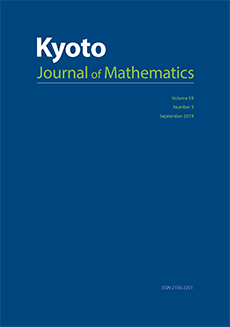Abstract
Consider an abelian variety of dimension defined over . Assume that , where is an integer, and let be linearly independent points. (So, in particular, have infinite order, and if , then the set is empty.) For a rational prime of good reduction for , let be the reduction of at , let for be the reduction of (modulo ), and let be the subgroup of generated by . Assume that and . (Note that this particular assumption forces the inequality , but we can take care of the case , under the right assumptions, also.) Then in this article, in particular, we show that the number of primes for which has at most cyclic components is infinite. This result is the right generalization of the classical Artin’s primitive root conjecture in the context of general abelian varieties; that is, this result is an unconditional proof of Artin’s conjecture for abelian varieties. Artin’s primitive root conjecture (1927) states that, for any integer or a perfect square, there are infinitely many primes for which is a primitive root . (This conjecture is not known for any specific .)
Citation
Cristian Virdol. "Artin’s conjecture for abelian varieties." Kyoto J. Math. 56 (4) 737 - 743, December 2016. https://doi.org/10.1215/21562261-3664896
Information





